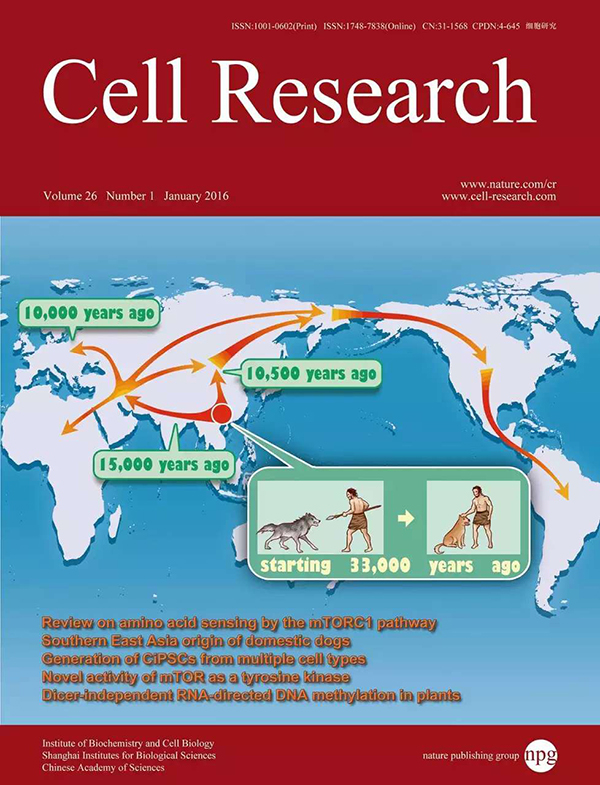
The cover of the first issue of Cell Research)2016 published the latest research on the origin of dogs by scientists in China.
Since its publication 26 years ago, the impact factor has increased from about 2 to 14.812, and the international academic journal CR (Cell Research) from China is considered to have created a miracle.
On June 13th, the Intellectual Property and Technology Division of Thomson Reuters released the latest Journal Citation Reports? (JCR) in 2016, which provided various annual journal metrics including Journal Impact Factors (JIF). The report covers 11,365 academic journals in 234 disciplines in 81 countries and regions around the world.
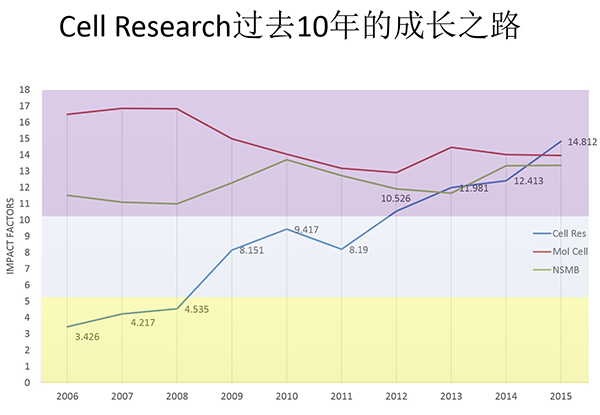
The higher the impact factor, the greater the influence of academic journals.
According to the report, in the field of life sciences composed of biochemistry, molecular biology and cell biology, the Scientific Citation Index (SCI) has collected 423 international academic journals in the world, and Cell Research ranks 10th in terms of impact factors, and it is also the first academic journal in the life sciences in the Asia-Pacific region.
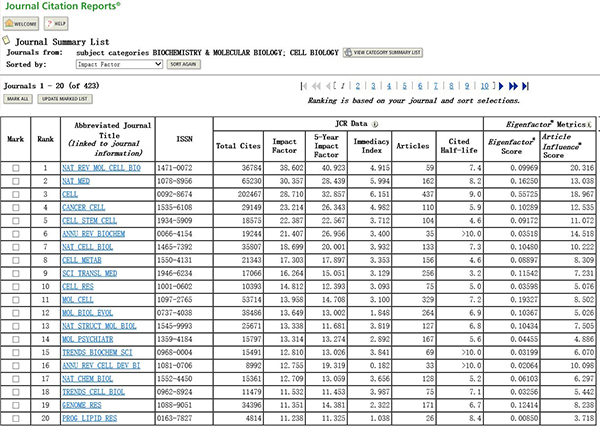
In this report, Cell Research is defined as an academic journal in the field of cell biology, but in fact, it is a comprehensive journal in the field of life science.
In the aforementioned ranking of life sciences, there are only three comprehensive journals ranked before Cell Studies, namely, internationally renowned academic journals Nature Medicine, Cell and Nature Cell biology (Nature and Science), which are comprehensive publications, including not only life science papers, but also astronomy.
This is also the first time that the influencing factors of Cell Research have surpassed the internationally renowned academic journals, such as MC (Molecular Cell) and NSMB (Nature Structural & Molecular Biology).
If only from the numerical comparison, among all disciplines, Cell Studies is the academic journal with the highest impact factor in China at present (in the actual ranking, it is only compared within the scope of classmates and the same field).
On the afternoon of June 15th, Pei Gang, an academician of China Academy of Sciences and president of Tongji University, told The Paper (www.thepaper.cn) that Cell Research was moving towards the top international academic journals. Its rise benefited from the rapid development of life science research in China, and it was also helping China scientists in the field of life science win more and more right to speak.
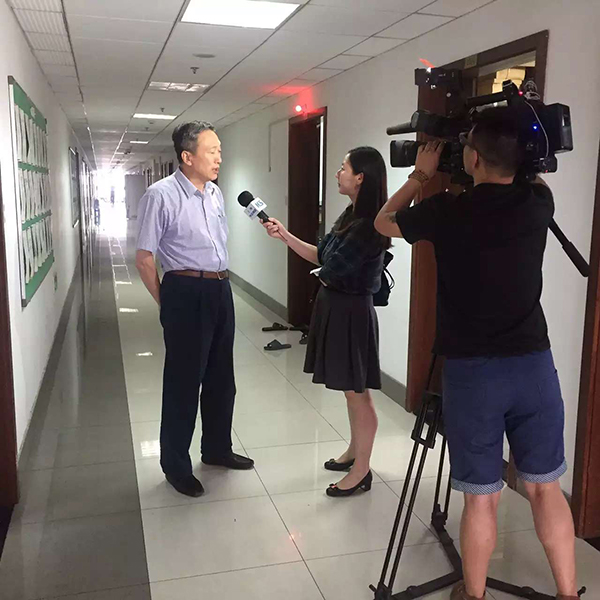
On the afternoon of June 15th, Pei Gang, editor-in-chief of Cell Research and academician of Chinese Academy of Sciences, was interviewed by the media.
Chinese and foreign scientists contributed equally.
Cell Research is a monthly magazine, which was founded in 1990. In 2006, Pei Gang began to be the editor-in-chief. At that time, the influence factor of Cell Research was 2.161.
Pei Gang revealed that graduate students of the Chinese Academy of Sciences need to publish good and high-impact papers after graduation. In the past, in order to support the development of Cell Research, the Chinese Academy of Sciences gave a regulation that if a paper was published in Cell Research, they could also graduate. At that time, people were invited everywhere to contribute articles, but now, they can’t send them through the back door.
In 2006, Pei Gang introduced Li Dangsheng, Ph.D. in molecular biology, who was then the deputy editor of the top international academic journal Cell, back to China, and asked him to be the executive deputy editor. Since then, the influencing factors of Cell Research have started to climb year after year.
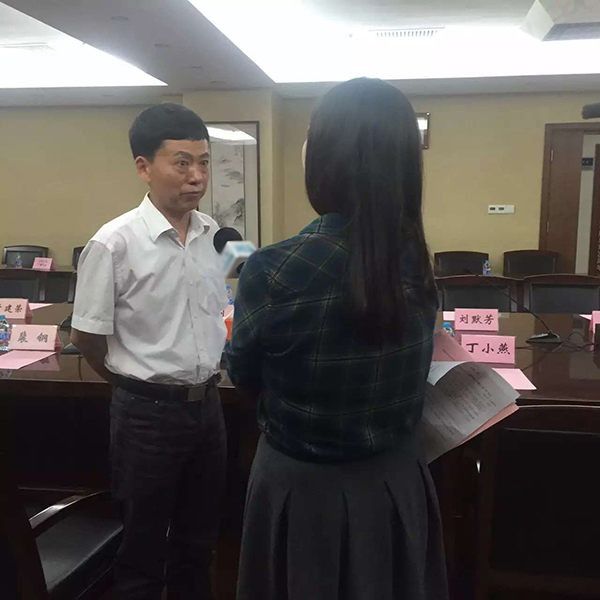
On the afternoon of June 15th, Li Dangsheng, executive deputy editor of Cell Research, was interviewed by the media.
Li Dangsheng told The Paper (www.thepaper.cn) that some people did want to publish papers through the back door a few years ago, but now there is no more. Having been rejected several times, they knew the style of Cell Research. At present, the magazine receives about 1600 articles each year, and less than 100 articles can be selected for publication.
Cheng Lei, director of the editorial department of the magazine, said that Chinese and foreign scientists contributed 50% of the articles and published about the same proportion.
Academic research attaches importance to originality, and whoever publishes the paper first is often the owner of the scientific research results. Cell Research is regarded as the "fast lane" for the publication of high-quality scientific research achievements in China.
Li Dangsheng said that only top papers and high-quality scientific research results can enhance the grade and influence of Cell Research. Therefore, papers that want to be published through the back door must not work. The secret of improving the impact factor of Cell Research lies in "finding the missing", and two kinds of papers are favored by it. One is that they have not been published in top international academic journals such as Nature, and the other is that top scientists are willing to support the papers of Cell Research. To pull such a paper, first, it depends on the eye, and second, it depends on the "relationship." Editors should be very knowledgeable, in order to build a strategic position and give professional opinions and suggestions, and the editorial department should also respond quickly, provide good service and review quickly, so as to win the trust and respect of scientists.
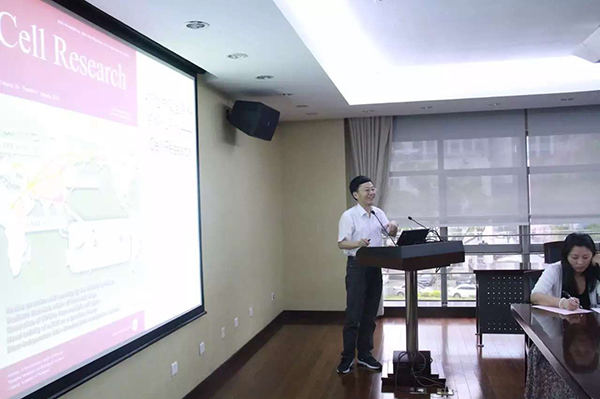
On the afternoon of June 15th, Dr. Li Dangsheng, executive deputy editor of Cell Research, introduced the journal.
Two cases of "missing"
In this regard, Luo Zhenge, a researcher at the Institute of Neuroscience, Chinese Academy of Sciences, has a deep understanding.
Diseases caused by Zika virus can often heal themselves, but pregnant women infected with Zika virus may cause microcephaly in newborns. However, the direct evidence of microcephaly caused by the virus has been lacking, but only the relevant data based on epidemiological investigation.
At the beginning of 2016, imported cases of Zika virus first appeared in China, and scientists in China isolated the related virus strain SZ01.
Based on this virus strain, in April, Luo Zhenge’s research group proved for the first time that Zika virus can cross the placental barrier, resulting in the decrease of lateral ventricle cavity and the obvious decrease of cerebral cortex area in offspring mice.
This is the first discovery in the world, and it is the direct evidence that Zika virus causes microcephaly. The animal model can be used in the follow-up research and development process such as vaccine and drug testing.
Because of the obvious experimental phenomenon, Luo Zhenge submitted his research paper to an internationally renowned academic journal for the first time, but the international reviewers put forward more stringent requirements for the paper. Luo Zhenge, who was well aware of the fierce competition in this research field, immediately transferred the paper to Cell Research, and submitted it on April 24. Within 72 hours, two international reviewers gave good comments. After a short supplementary experiment, the paper was accepted on May 2 and published online on May 13.
Almost at the same time, several other similar studies were published in top international academic journals such as Nature, Science and Cell Stem Cells.
Another case is that in 2008, the research team led by Zhang Chenyu, a professor at Nanjing University, found a stable small RNA in the blood, which opened a new research field, but its paper was frustrated when it was reviewed by academic journals such as Nature, and it was delayed to be published. After learning this situation, Li Dangsheng won the paper over and finally published it in Cell Research. Up to now, according to the statistics of SCI core database, this paper has been cited more than 1500 times. This citation exceeds most research papers.
Let China’s high-quality scientific research achievements be discovered and recognized
On the afternoon of 16th, Luo Zhenge told The Paper that although China’s life science research has made great progress, in the international academic circle, China scientists whose English is not their mother tongue are still at a disadvantage in the competition. In particular, editors of many international academic journals are more familiar with foreign scientists than China scientists. However, Cell Research provides an opportunity for China’s high-quality scientific research achievements to be discovered and recognized by the international community.
At present, Cell Research has 6 editors, each of whom handles about 300 research papers every year.
Li Dangsheng said that in addition to the huge workload, another challenge faced by editors is that knowledge is updated quickly, and life sciences include many fields such as immunity, stem cells, developmental biology, structural biology, etc., and they need to study frequently to have the ability to review related papers. 30% of the papers in Cell Research are available for open access (free download), and the remaining 70% need to be paid.
Cheng Lei revealed that, except for government-funded funds, Cell Research basically achieved a balance of payments by collecting subscription fees from foreign institutions.
Jia Hepeng, former editor-in-chief of Science News magazine of Chinese Academy of Sciences and former head of China region of British Science and Development Network (SciDev.Net), told The Paper on the evening of 16th that there are many periodicals, but few good ones. Compared with start-ups, the establishment of high-quality academic publications is not burning money, but it still needs stable support so that the editorial department does not have to rack its brains for money. In particular, scientific communication is very important to improve the citation rate of individual papers and the influencing factors of journals. Some China journals have been unable to do it for many years, and the reason is that they have not done enough in scientific communication. They have always been urged by the government to do it, but they will not do it until the official gives money. However, in this respect, Cell Research has further introduced the high-quality scientific research achievements of China scientists by cooperating with springer-Nature and relying on the latter’s scientific communication ability.
关于作者